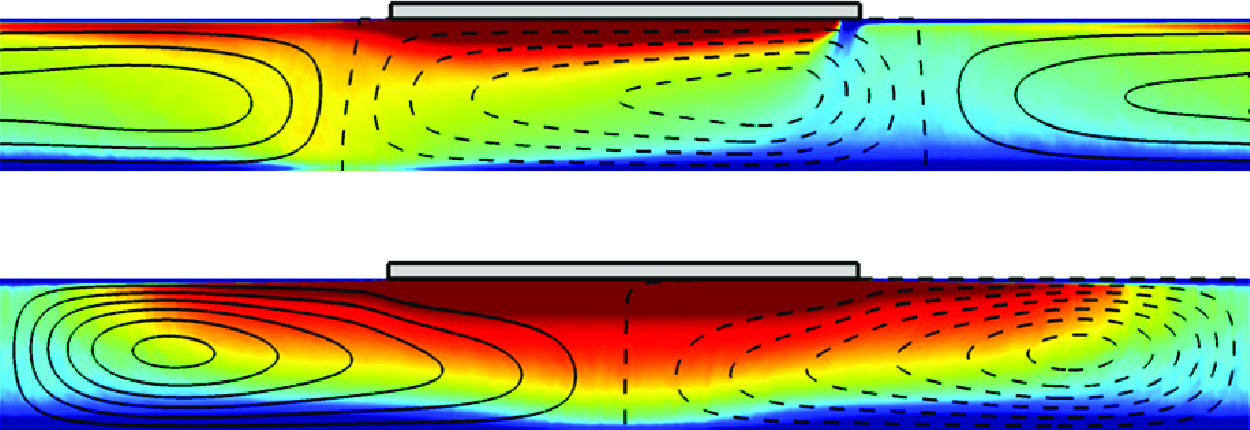No CrossRef data available.
Article contents
An insulating plate drifting over a thermally convecting fluid: the effect of heating mode on plate motion and coupling mode
Published online by Cambridge University Press: 14 May 2025
Abstract

Being thicker and lighter than the oceanic lithosphere, the continental lithosphere exerts a thermal blanket effect on the convective mantle by locally accumulating heat and altering the flow structure, which in turn affects continent motion. This thermal–mechanic feedback has been studied through a simplified model of a thermally insulating plate floating over a bottom-heated convective fluid, which shows that plate mobility enhances with plate size and a unidirectionally moving mode (UMM) emerges for sufficiently large plates. Nevertheless, apart from bottom heating, the mantle is also subject to internal heating induced by radioactive decay. How the addition of internal heating affects the dynamic coupling is still unclear, which motivates the present study. Numerical simulation results show that the effect varies with plate size. For small plates, as internal heating intensifies, plate motion becomes increasingly persistent and the critical plate size for the UMM decreases. This results from the enhanced thermal blanket effect under intensified internal heating, which enables a faster generation of hot plumes to boost plate motion during its slowdown. Most notably, the addition of internal heating brings a new mode for large plates – a permanently stagnant mode (PSM) – in which the plate oscillates permanently above a hot up-welling with down-wellings locating far away. The critical size for the PSM decreases as internal heating intensifies. In the PSM, the symmetry between cold and hot plumes breaks. Implications of these findings for the dynamic coupling on Earth and Mars are discussed.
Information
- Type
- JFM Papers
- Information
- Copyright
- © The Author(s), 2025. Published by Cambridge University Press


